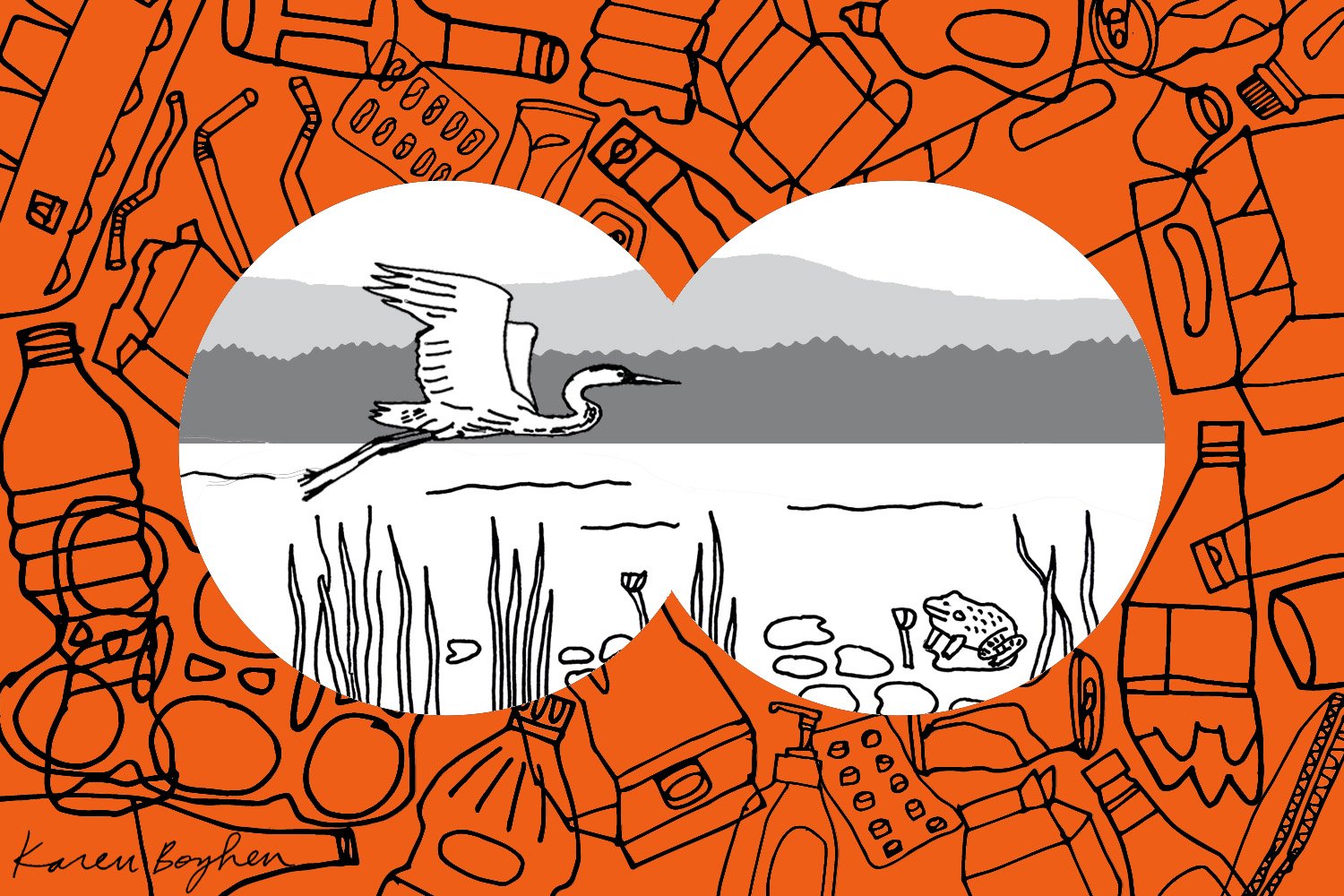In Search of Sustainability — Part 1: Good News About Recycling
We’d like to begin by saying, Cog and our clients aren’t jerks. We’re well aware that our industry is part of the waste problem in America, and we’re working to change that. Advances are constantly being made that put better techniques, more eco-friendly materials, and more efficient recycling at the disposal of consumer package good brands. What are they and what changes do we need to make to incorporate them? This series will share what we find.
After our tour of the Rumpke Material Recovery Facility, we felt like enlightened beings coming down from the mountain with good news
This article isn’t to make Rumpke sound like heroes. It’s not about making Cog sound like heroes, either. It’s about sharing the knowledge we gained about basic recycling, so we can all be heroes.
Recycling will always have room to improve, but as it stands now, what Rumpke is accomplishing is far more promising than many of us thought. It’s downright inspirational.
In Greater Cincinnati, Rumpke is ground zero for recycling. They have a fleet of over 2,000 vehicles, including 536 CNG trucks fueled by compressed natural gas that reduces carbon emissions by 18%. Rumpke even produces the natural gas themselves by recovering methane from decomposing garbage at their Colerain Township. (Pretty cool, yeah?) Those trucks collect materials from across the area every day and then unload their contents into veritable mountains at the tipping floor of the Rumpke facility in St. Bernard.
Anne Gray, Rumpke’s education specialist and our gracious tour guide, let us watch from an enclosed corridor above as front- end loaders dug into the piles until their buckets were brimming with unsorted plastic, metal, paper and glass. One bucket-load at a time was shaken into drum feeders which regulate the material for a more consistent flow as it moves on a wide conveyor belt that runs all day long, transporting an endless stream of items in a single layer into the plant.
The sorting begins inside. With so many materials intermingled, people and machines take their turns separating them over multiple stages. The pre-sort area relies entirely on human expertise. The workers’ primary job is to spot and remove unacceptable items, including the dreaded plastic shopping bags that come into the plant by the thousands. We were amazed at how fast they could pluck up bags mixed in with everything else and stuff them into vacuum tubes that carry them to their own area.
RUMPKE’S MRF CENTER, LOCATED IN ST. BERNARD | IMAGE COURTESY OF RUMPKE
Know the enemy: Bags and Batteries.
Plastic shopping bags that aren’t spotted—and there are always too many—clog the machines on the recycling line and must be cleared by hand many times per day. Batteries that aren’t removed from the conveyor belts cause fires and can release toxic fumes. (In Greater Cincinnati, take those items to locations equipped to manage them, such as Cohen, Batteries Plus Bulbs, Cleanlites Recycling, Blair Technology Group).
After the line is vetted for items dangerous to the machines ahead (including, would you believe, heavy metal car parts?) they trundle through different stages where some pretty incredible equipment sorts approved plastics, crushes glass, and separates paper goods and cans. An ingenious machine employing rare earth magnets exerts reverse polarity to send aluminum cans on an arching flight onto one belt while the other material falls onto another. The huge bins collecting the jewel-like glass and multi-colored metals look like something from an ancient emperor’s treasure trove.
The sorted materials all go to separate destinations. The broken glass is transported to Rumpke’s glass facility in Dayton, one of a very few in the country owned by a recycling and waste company. There, it is prepared for sale to end markets. Tons of used cardboard/paper are baled and shipped to plants that can recycle them. Sorted metal and aluminum materials leave by the truckloads to wherever their buyers are located.
We see a lot of good happening.
Recycling works. What once was an experiment is now an integral part of the world economy. It keeps waste out of our already bloated landfills (and, in the case of Rumpke, what ends up decomposing in landfills is mined for its gas and sold as fuel). Recycling is also a viable source of material for a growing number of businesses. It provides jobs. It offers hope that we can slow and someday stop ecological damage.
Uh, oh, we see a lot to worry about, too.
A great deal of waste goes to landfills that take up more and more land that could be used for other purposes. More education is needed to teach citizens what can and cannot be recycled, and to encourage those who don’t pitch in to get on board.
Waste from packages can be reduced—perhaps eliminated.
Many individuals and businesses are doing what they can to help. If enough of us get on board, pollution leading to climate change just might not kill us. Wouldn’t that be nice?





